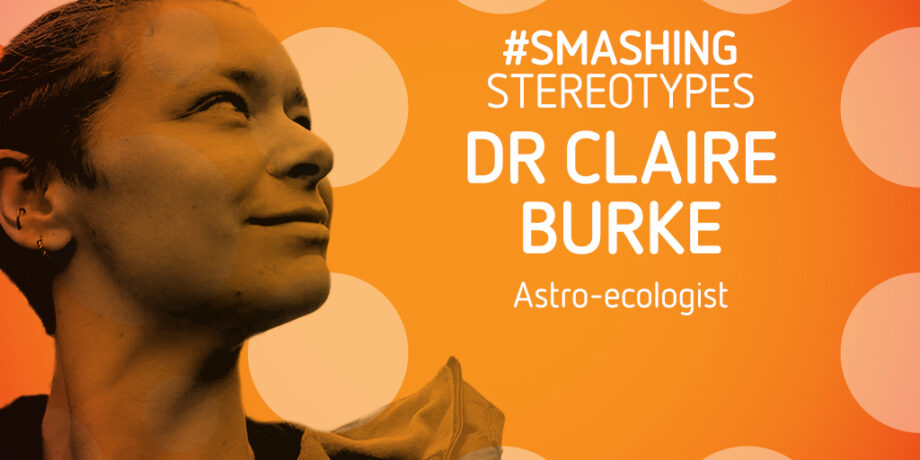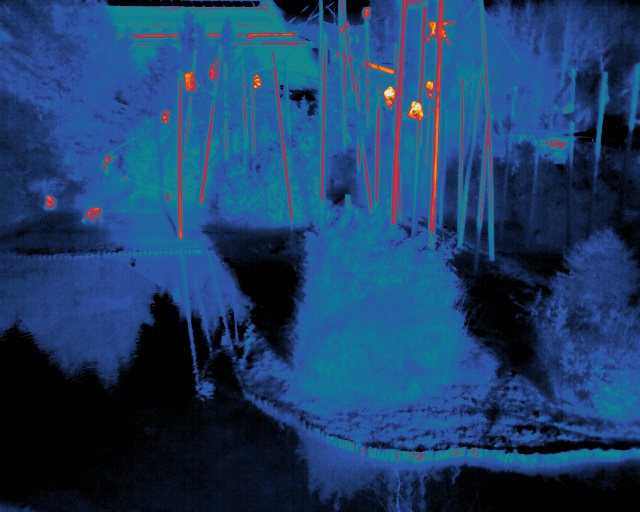
Dr Claire Burke
Astro-ecologist, Liverpool John Moores University
Dr Claire Burke is an astro-ecologist, she brings her knowledge of how things work in space back down to Earth to help preserve out planet’s vital biodiversity. Claire’s PhD was in figuring out how the most massive galaxies in the Universe formed and evolved. Since then she’s applied her physics skills to help understand how climate change is affecting extreme weather, and now to help monitor endangered animals. Using drones, machine learning and thermal cameras we can find and track endangered animals and help catch poachers before they do any harm. In thermal images animals glow in a similar way to stars and galaxies, so we can use techniques from astrophysics to find them.*
In the area where I grew up, there were a lot of opportunities to explore nature, and I was always curious about wildlife. As a teenager, I had a particularly inspiring physics teacher and I remember her teaching us about the life cycle of stars. That was so fascinating to me and set me on the path towards astrophysics.

I studied astronomy at university and was really into that for a long time. One day we had a chat with an ecologist who wanted to use drones to find animals. They wanted to use thermal infrared cameras to see around the animals camouflage and catch poachers hiding in the bush, but were really struggling to understand the images. We have been using infrared imagery in astronomy for decades, so we thought about how we could use the technology from astronomy to protect wildlife on Earth.
The idea of science being done by a lone genius, who solves all of the problems with his big, clever brain, is a total myth. Science is a team effort. I’m an astronomer and I work with drones and ecologists to do conservation. But nobody can every know everything about everything. This means I need to work with other scientists who know about how drones work or how animals behave, so we need to have a big team with lots of different skills.
There is still a place for you to solve big environmental problems even if you’re not an astronomer, an ecologist or a drone engineer. If you follow what you love, there’s a place for you. We need all forms of experts from a wide range of fields to help solve these problems. Not just scientists, everybody can play a part, from law makes to musicians, from psychologists to linguists.
There’s a stereotype that science is dominated by men. As I’ve gotten more senior in my position, I’ve found that there are more men at the top than women. But the environment we work in is changing and science is becoming a more inclusive place to work. Importantly there are more women and more opportunities for people with different ethnicities, sexual orientation and disabilities. Having this diversity and background and experience is very useful for science, because diverse perspectives mean you can develop more innovative solutions.
In school, we learn physics, chemistry and biology are very separate subjects. The truth is most innovation happens when you’re at the interface of two or more different subjects. Places where different knowledge and perspectives can mix. It’s the way these come together that can give you a leading edge or an insight to see things differently. It’s amazing what can happen when different scientific worlds collide, as I can attest from my astro-ecology project.
—
Click here to go back to view more scientists who are Smashing Stereotypes.
*The information featured in this profile was last updated in March 2020. Claire is now the Head of Science at Climate X, calculating the physical risks and impacts from climate change to help build a more resilient future for society.
The Smashing Stereotypes campaign is supported by 3M.